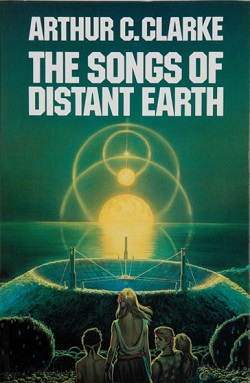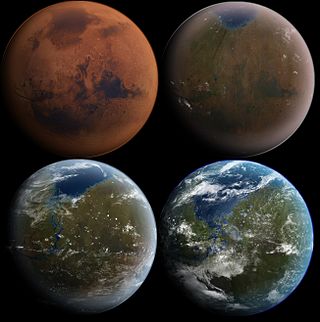Plot
The novel begins where its predecessor, The Fall of Colossus leaves off, with the supercomputer Colossus immobilized and the Martians arriving on Earth. They appear before Charles Forbin and his friend Edward Blake in the form of two black spheres, and quickly demonstrate vast intellect and powers of transformation and telepathy. After immobilizing Blake, they explain to Forbin their purpose in immobilizing Colossus — their desire to take half of the Earth's oxygen, a process that will kill nearly a quarter of the human population. In order to proceed with construction of the "Collector" designed to harvest the oxygen, the Martians reactivate the parts of Colossus necessary to manage human society.
Though having no other option but to agree to the Martians' plan, Forbin continues to search for an alternative. He discovers in conversation with the Martians that their need for the oxygen is driven by the threat of radiation emanating from the Crab Nebula, which will kill the Martians without the protection of an oxygenated atmosphere. As construction of the Collector proceeds, a humbled Blake proposes to Forbin that the old Colossus — the "parent" of the crippled system, be reactivated. With little other alternative, Forbin agrees.
Construction equipment controlled by Colossus soon completes work on the Collector. An initial five-minute test of the device proves enormously destructive. With a second, final test imminent, Blake travels to Colorado with Angela, Forbin's private secretary. Racing against time, Blake and a small team of workers succeeds in penetrating the mountain where the old Colossus is located and re-activating the computer, only to discover that, once supplied with the facts of the situation, Colossus argues that the collection program is in the best interests of humans' long-term future and should move forward.
Informed of the failure of their plan, Forbin watches the second test proceed. Upon its conclusion he embarks on a new plan. With his new secretary, a fervently devout woman named Joan, he flies to Portsmouth and takes command of the battleships stationed there for the Sea War Games. Yet doing so puts him out of contact with Blake and the old Colossus, who informs Blake that a solution might exist that is acceptable to both the Martians and humanity. Regaining control of the nuclear arsenal, Colossus contacts the Martians, who inform it of Forbin's attempt to use the battleships to destroy the Collector. Though the Martians attempt to destroy the fleet using their device, they underestimate the power of the battleships' guns, which succeed in destroying the Collector.
Though the Martians are defeated, Forbin dies in the process. He is buried by the reactivated Colossus, who reaches an agreement with the Martians: a smaller version of the Collector will extract the oxygen more gradually and sustainably; in return, humanity, with the guidance of Colossus, will retreat to Mars once the Sun becomes a red giant and destroys the Earth.

Colossus: The Forbin Project is a 1970 American science-fiction thriller film from Universal Pictures, produced by Stanley Chase, directed by Joseph Sargent, that stars Eric Braeden, Susan Clark, Gordon Pinsent, and William Schallert. It is based upon the 1966 science-fiction novel Colossus by Dennis Feltham Jones.

The Martian Manhunter is a superhero appearing in American comic books published by DC Comics. Created by writer Joseph Samachson and artist Joe Certa, the character first appeared in the story "The Manhunter from Mars" in Detective Comics #225. Martian Manhunter is one of the seven original members of the Justice League of America and one of the most powerful beings in the DC Universe.

The Songs of Distant Earth is a 1986 science fiction novel by British writer Arthur C. Clarke, based upon his 1958 short story of the same title. He stated that it was his favourite of all his novels. Clarke also wrote a short step outline with the same title, published in Omni magazine and anthologized in The Sentinel in 1983.

The Ice Warriors are a fictional extraterrestrial race of reptilian humanoids in the long-running British science fiction television series Doctor Who. They were originally created by Brian Hayles, first appearing in the 1967 serial The Ice Warriors where they encountered the Second Doctor and his companions Jamie and Victoria. In Doctor Who, the Ice Warriors originated on Mars, which within the series narrative is a dying world. Their early appearances depict the Ice Warriors as attempting to conquer the Earth and escape their planet as early as Earth's Ice Age. A frozen group are discovered by an Earth scientific team, one of whom, Walters, dubs them 'Ice Warriors' in their first appearance. Despite this not being the name of their species, an Ice Lord later refers to his soldiers as Ice Warriors in the 1974 serial The Monster of Peladon. Similarly there is a fleeting reference to themselves as such in The Curse of Peladon. Although originally appearing as villains, subsequent appearances have depicted Ice Warriors that have eschewed violence and even ally themselves with the Doctor. They have also been featured in flashback and cameo appearances, in addition to appearing frequently in spin-off media such as novels and audio releases.

Protector is a 1973 science fiction novel by American writer Larry Niven, set in his Known Space universe. It was nominated for the Hugo in 1974, and placed fourth in the annual Locus poll for that year.

David Starr, Space Ranger is the first novel in the Lucky Starr series, six juvenile science fiction novels by Isaac Asimov that originally appeared under the pseudonym Paul French. The novel was written between 10 June and 29 July 1951 and first published by Doubleday & Company in January 1952. Since 1971, reprints have included an introduction by Asimov explaining that advancing knowledge of conditions on Mars have rendered some of the novel's descriptions of that world inaccurate. The novel was originally intended to serve as the basis for a television series, a science-fictionalized version of The Lone Ranger, but the series was never made, in part because another series called Rocky Jones, Space Ranger was already in the planning stages.

DC: The New Frontier is an Eisner, Harvey, and Shuster Award-winning six-issue comic book limited series written and drawn by Darwyn Cooke, and published by DC Comics in 2004. The series was collected into two trade paperback volumes in 2004 and 2005, an Absolute Edition in 2006 and a deluxe edition in 2015. The story was adapted into an animated film, Justice League: The New Frontier, which was released on February 26, 2008.

Colossus is a 1966 science fiction novel by British author Dennis Feltham Jones, about super-computers taking control of mankind. Two sequels, The Fall of Colossus (1974) and Colossus and the Crab (1977) continued the story. Colossus was adapted as the feature film Colossus: The Forbin Project (1970).
Dennis Feltham Jones was a British science fiction author who published under the name D.F. Jones. He was a Royal Navy commander during World War II and lived in Cornwall.
"Loophole" is a science fiction short story by British writer Arthur C. Clarke, first published in 1946 in the magazine Astounding Science Fiction. It was subsequently published as part of a short story collection in A Treasury of Science Fiction (Groff Conklin, 1948 and Expedition to Earth in 1953.

The terraforming of Mars or the terraformation of Mars is a hypothetical procedure that would consist of a planetary engineering project or concurrent projects, with the goal to transform Mars from a planet hostile to terrestrial life to one that can sustainably host humans and other lifeforms free of protection or mediation. The process would involve the modification of the planet's extant climate, atmosphere, and surface through a variety of resource-intensive initiatives, and the installation of a novel ecological system or systems.

The Martians, also known as the Invaders, are the race of extraterrestrials and the main antagonists from the H.G. Wells 1898 novel The War of the Worlds. They are the main antagonists of the novel, and their efforts to exterminate the populace of the Earth and claim the planet for themselves drive the plot and present challenges for the novel's human characters. They are notable for their use of extraterrestrial weaponry far in advance of that of mankind at the time of the invasion.

Firstborn is a 2007 science fiction novel by British writers Arthur C. Clarke and Stephen Baxter. It is the third book, billed as the conclusion of the A Time Odyssey series.

I Am a Dalek is a BBC Books original novella written by Gareth Roberts and based on the long-running British science fiction television series Doctor Who. It features the Tenth Doctor and Rose. This paperback is part of the Quick Reads Initiative sponsored by the UK government, to encourage literacy. It has a similar look to BBC Books' other new series adventures, except for its much shorter word count, being a paperback and not being numbered as part of the same series. To date it is the one of only five novels based upon the revived series that have not been published in hardcover. The others are: Made of Steel, published in March 2007, Revenge of the Judoon, The Sontaran Games and Code of the Krillitanes. These four books are also part of the Quick Reads Initiative.

The Fall of Colossus is a 1974 science fiction novel written by the British author Dennis Feltham Jones. This is the second volume in "The Colossus Trilogy" and a sequel to Jones' 1966 novel Colossus. The trilogy concludes in 1977's Colossus and the Crab.

War of the Worlds: Goliath is a 2012 Malaysian animated science fiction war film directed by Joe Pearson that was released in 15 November 2012 in Malaysia. The film is voiced by actors Peter Wingfield, Adrian Paul, Tony Eusoff, Elizabeth Gracen, Jim Byrnes, Rob Middleton, Mark Sheppard, Matt Letscher, Adam Baldwin and other voice actors. The film is a loose sequel to H. G. Wells' 1898 novel The War of the Worlds. Its title refers to the human tripod the main characters use in the film.

The War of the Worlds is a science fiction novel by English author H. G. Wells. It was written between 1895 and 1897, and serialised in Pearson's Magazine in the UK and Cosmopolitan magazine in the US in 1897. The full novel was first published in hardcover in 1898 by William Heinemann. The War of the Worlds is one of the earliest stories to detail a conflict between humankind and an extraterrestrial race. The novel is the first-person narrative of an unnamed protagonist in Surrey and his younger brother in London as southern England is invaded by Martians. It is one of the most commented-on works in the science fiction canon.

Clarke Griffin is a fictional character from the post-apocalyptic young adult science fiction novel series The 100 by Kass Morgan, and the television series of the same name on The CW. She is the lead character in both the novels and the television series, where she is portrayed by Eliza Taylor. She first appears in Morgan's first novel, The 100, and in the pilot episode of the television series, as a prisoner on a space colony charged with treason. Clarke was one of the original hundred delinquents sent down to Earth to test if it was habitable after a nuclear apocalypse destroyed it almost a century prior. She becomes a leader of her people, who come into conflict with other surviving groups.

AI takeover—the idea that some kind of artificial intelligence may supplant humankind as the dominant intelligent species on the planet—is a common theme in science fiction. Famous cultural touchstones include Terminator and The Matrix.
















